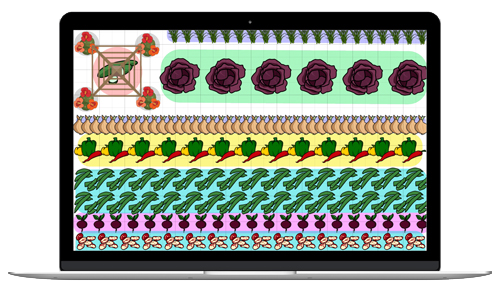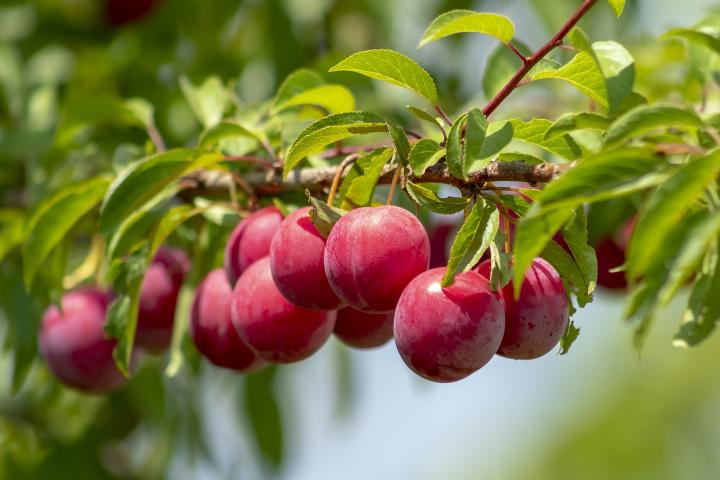
Planting, Growing, and Harvesting Plums
The Almanac Garden Planner - Use It Free for 7 Days!
Plan your 2025 garden with our award-winning Garden Planner.
- For a European type, try the ‘Stanley’. This semi-freestone type works great for the eastern, midwestern, and some of the northwest regions of the U.S. It is self-fertile, meaning no cross-pollination is necessary. It’s harvested in late August, producing medium to large plums with dark blue skin and greenish-yellow flesh and is great for cooking, canning, or eating fresh.
- For a Japanese type, try the ‘Satsuma’, which produces large, dark-red plums. This kind is good for eating fresh and canning because of its sweet taste.
- American hybrid trees, such as ‘Alderman’, ‘Superior’, and ‘Underwood’, are all popular choices. These trees combine the taste of the Japanese variety with the hardiness of the European variety. These types work well for regional extremes.
Cooking Notes
- Plums are great for making jams or jellies.
- Plums can also be stored through freezing or drying them (dried plums are prunes), learn how to dry fruit with a dehydrator.
ADVERTISEMENT
Hi,
Does the root system of the Santa Rosa Plum Tree spread out, or grow downwards? I live in WA State.
Thank you.
Interested in planting peach, pear and plum trees in Northern Wisconsin
I live in middle Georgia and I have 2 Bruce and 1 Methley plum trees. They've not borne fruit in the 5 years that I have had them. I have a feeling that they might not be getting enough sunlight. Exactly how many hours of sunlight do they need in a day? Thanks.
The plum trees grow best in full sun (8 hours of direct sunlight). In the spring spread a balanced 10-10-10 fertilizer around the trees.
I picked up some plum trees at a yard sale and don't know what kind they are. I want to plant them in my pasture but I don't know if they will hurt my animals like cherry trees. Any help would be nice.
Trees in the genus Prunus can be toxic to livestock. This includes cherries, plums, apricots and peaches. See link below for some more information.
www.aspca.org/pet-care/animal-poison-control/toxic-and-non-toxic-plants/plum
My twenty year old blirena plum has grown too large (20x20) and I want to reduce its size and prolific plums. It was thinned out a few years and produced 4 times the fruit the next year and damaged many branches which broke under the weight of the fruit. Can I head it back a third without creating too many water sprouts and more plums? I would like to keep the tree rather than removing it and starting over!
You can prune the tree back by a third. You can wait to prune some branches after they have flowered to reduce the amount of plums.
I have a Stanley plum trees orchard almost 3000 trees , the rows are 3 meters apart and the trees are also 3 meters from each others , my question is can I plant more fruit trees in between and have a mixed orchard in order to take advantage of the space , if so what are the fruit trees that are suitable to be planted in the midst of this plum trees orchard ,? do I have to plant just other plum variety or can another fruit tree kind say cherries or peaches coexist in the midst of plums .....please help me with any of your suggestions as I am very novice , thanks
We don’t recommend planting other trees between the plum trees. The 3 meter spacing is already pretty tight and the trees need space to grow. You didn’t mention if your trees are dwarf or standard. It’s recommended to space standard Stanley trees 18 - 20 feet apart and dwarf trees 8 - 10 feet apart.











